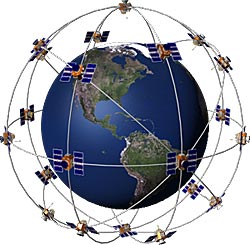Go to http://www.physicsclassroom.com/reviews/newtlaws/newtlawsprint.cfm 41, 42, 46, 50-56
=================
Links to consider
Parachute Basics
Air Resistance (NASA)
Parachute History (you may want to check out Historical Review)
EACH GROUP WILL NEED TO TURN IN A SET OF CALCULATIONS BASED ON THE INFORMATION BELOW.
=================
Links to consider
Parachute Basics
Air Resistance (NASA)
Parachute History (you may want to check out Historical Review)
EACH GROUP WILL NEED TO TURN IN A SET OF CALCULATIONS BASED ON THE INFORMATION BELOW.
Today you will need to complete the Barbie parachute jump three times today.
Measure the time it takes to drop the Barbie to the ground three times, using a stopwatch.
Using a force probe that is connected to a Logger pro, measure the Force weight of the Barbie and chute.
Divide by 9.8 m/s/s to get Barbie and chute's mass in kg.
Take a picture of the Barbie, in its harness, AND a picture of the parachute and harness system. Txt or email it to me, with your group member names
Class Prep: Measure the distance from the landing rail to the ground below
_____m
If we drop an object from the landing rail to the ground (assume no friction), we know the following:
v(i)=____m/s
a=____ m/s/s
d=____ m
What will be the time it takes for the object to land?
You will need to complete the Barbie parachute jump three times today.
1. Measure the time it takes to drop the Barbie to the ground three times, using a stopwatch. Calculate the average time ______s
2. Using a force probe that is connected to a Logger pro, measure the Force weight of the Barbie and chute.
3. Using a(g) = 9.8 m/s/s, determine the mass of Barbie/chute's ____ kg.
4. Now you have a slightly different system than the one we first considered. We know the distance to the ground d=___ m, the initial velocity v(i)=____m/s, and the time(avg) of the three trials _____s
5. Using the data in 4., calculate the net acceleration of your parachute.
6. Draw a force diagram of Barbie, the net force, the force weight, and the force up.
7. Determine F(up).
Take a picture of the Barbie, in its harness, AND a picture of the parachute and harness system. Email it to me, along with a picture or shared document of your calculations.
Reflection (to be done on Monday)
Measure the time it takes to drop the Barbie to the ground three times, using a stopwatch.
Using a force probe that is connected to a Logger pro, measure the Force weight of the Barbie and chute.
Divide by 9.8 m/s/s to get Barbie and chute's mass in kg.
Take a picture of the Barbie, in its harness, AND a picture of the parachute and harness system. Txt or email it to me, with your group member names
Class Prep: Measure the distance from the landing rail to the ground below
_____m
If we drop an object from the landing rail to the ground (assume no friction), we know the following:
v(i)=____m/s
a=____ m/s/s
d=____ m
What will be the time it takes for the object to land?
You will need to complete the Barbie parachute jump three times today.
1. Measure the time it takes to drop the Barbie to the ground three times, using a stopwatch. Calculate the average time ______s
2. Using a force probe that is connected to a Logger pro, measure the Force weight of the Barbie and chute.
3. Using a(g) = 9.8 m/s/s, determine the mass of Barbie/chute's ____ kg.
4. Now you have a slightly different system than the one we first considered. We know the distance to the ground d=___ m, the initial velocity v(i)=____m/s, and the time(avg) of the three trials _____s
5. Using the data in 4., calculate the net acceleration of your parachute.
6. Draw a force diagram of Barbie, the net force, the force weight, and the force up.
7. Determine F(up).
Take a picture of the Barbie, in its harness, AND a picture of the parachute and harness system. Email it to me, along with a picture or shared document of your calculations.
Reflection (to be done on Monday)
